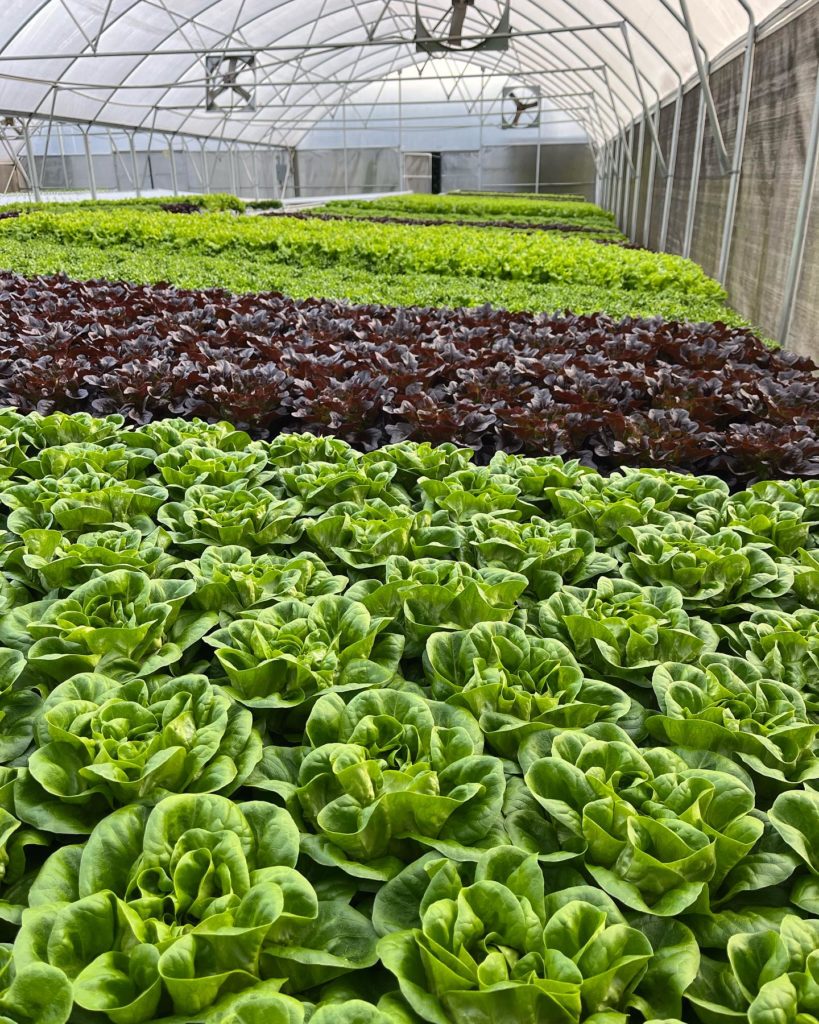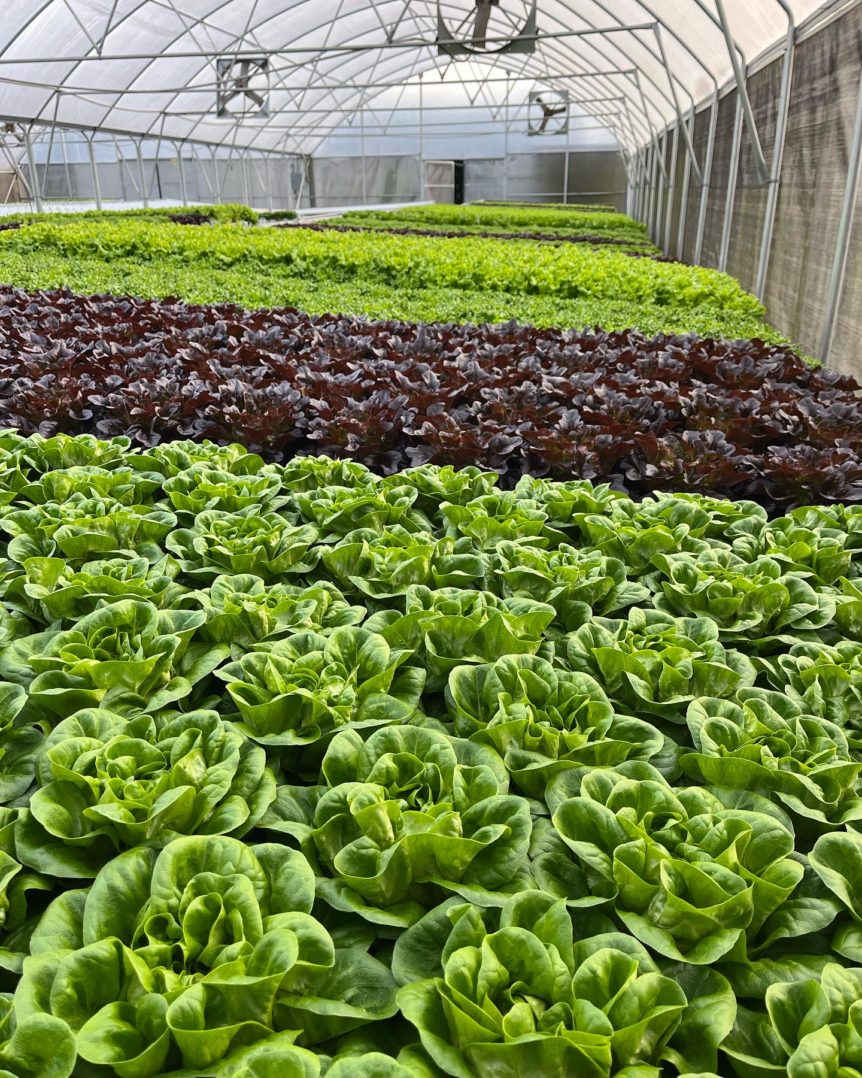
By Clint Thompson
Alabama vegetable producer Will Mastin utilizes an alternative approach to growing lettuce. Instead of producing the vegetable in a field setting, Mastin, in Baldwin County, grows lettuce hydroponically; a unique, sustainable approach he has implemented for 12 years.
“Hydroponic lettuce is just growing lettuce without any soil. There’s a couple of different methods of doing that. The method that we use is something called NFT or nutrient film technique. The seeds are started in a growing media which is kind of like a sponge medium, and they put the seeds into channels. Then we run a thin film of water and nutrients across the bottom of the channels. That delivers water and nutrients and oxygen to the root zones of the plants. They spend their whole life cycle like that.”
Roots, which are grown in the bottom of the channels, are constantly being fed essential resources like nutrients. It is a recirculating system, meaning water is pumped up and across the root zones before returning to the tank.
Additional Up-Front Costs
Short-term, it is a more expensive way to produce vegetables. Long-term, it provides a more efficient and sustainable way to grow those same crops.
“There’s a lot more up-front costs, because instead of just making plant bulbs and amending them, you have to build all of the infrastructure for all of the hydroponic system. There is a lot more up-front cost, but once you get it developed, the plants grow faster; everything is done standing up, so you reduce a lot of labor. But you reduce labor at every step, which the most expensive part of farming is your labor. It is much more efficient labor wise.
“The plants grow a lot faster. They’re ready in probably 80% of the time than it would take to grow in the field. They have a constant delivery of moisture and nutrients to the roots. Once you get your system set up, it’s a much more efficient growing system for the lettuce. Plus, you get away from soil-borne problems like chewing larvae that live in the soil; nematodes and soil-borne funguses and bacteria.”
Another benefit is the reduction of insect pressure since the plants are out of the soil where pests spend most of their life cycles. There are still insect infestations, but they are from mobile, sucking bugs like thrips, aphids and whiteflies.
Plants are produced indoors in shipping containers and greenhouses which protect from wind, hail and rain. Farmers can produce more in a smaller space.










